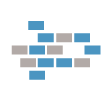Q&A with Residency Unlimited’s Ran Zhou
Nov 06, 2019
We’ve partnered with Residency Unlimited and are co-sponsoring another exhibition of theirs titled RU Exhibition: Reclamation.
Don’t miss this spectacular show staring the work of Ahmed Alasad, Mariam Alnoaimi, Elsie Kagan, Judith Leinen and Ran Zhou. As their installations will be up for view now until November 10th at Compère Collective located on 351 Van Brunt St, Brooklyn
On view: November 6 – 10, 2019
Location: Compère Collective, 351 Van Brunt St, Brooklyn
Hours: 12 – 6pm
Curated by Anna Cahn for Residency Unlimited
You can view their site here to learn more about this organization and read their announcement about working with us and using our space.
Please reach out directly to info@realtycollective.com, if you have a project or idea you would like to host in our space.
Q&A with Ran Zhou
Q. What brings you joy as an artist?
A. The most exciting part of art is something that cannot be achieved by language. I used to be an online writer – I wrote Chinese novels and enjoyed playing with words. But as time goes by, I could sense the powerless through writing – language itself is so limited. For many sense/feeling/situation that might be unclear and obscure, at the moment being transferred into concrete words, it lost its charm. This is also a turning point for me to explore creation through multimedia art – there might be more ways to achieve communications. There is something unspeakable but could only be sensed – and artists have their own ways to make it real and pass it to the audiences in the most appropriate way.
Q. How has being a resident in NYC affected or contributed to your art?
A. Compared with other cities I have been, New York is like boiling water pound with higher density of energy. Fresh things are coming out everyday, but at the same time here has more established institutional system of art – hard to say it’s a good thing or not since I keep doubt about the relationship between art and institution. It is also the land that allows art to grow diversely, and wildly. The wild power is what I’m seeking from New York after university. I still see my work as something cultivated from an elitist, academic greenhouse. Does it have the real power speak up? I’m still thinking.
Q. What do you plan to do next?
A. As a cultural phenomenon, fashion becomes my new research interest of art practice, while it has a deep connection with my personal interest of daily life. Fashion is far more beyond the stereotyped fancy or luxury, while its visual language could not just be clothes-making. Instead, I’m thinking of making art of “fashion” in a harsh, informe (formless) way, such as moldy-skinned mannequins packed with transparent plastic wrap. Fashion, as well as its distorted relationship with our body and identity, worth to be explored more through diversified visual language and land onto a socio-historical context. Originated from our willingness of personal expression out of uniforms, fashion is a mirror that reflects the way we define self-image with a strange body of ourselves, under different social circumstances.
Q. How has your work developed since your last exhibit?
A. I have been working with different research-based topics regarding urban cartography and memory deconstruction, solidification of the education system, child safety, dynamics of the migration flow, etc. For example, the Map series, which explores a dialogue between the past and present on Beijing map, and further moves to a tricky role played by human between city/cityscape and nature/landscape in a universal sense. After doing all these social topics, a part of me starts to feel unsatisfied and restless. On the one hand, continuous heavy thinking make me feel painful – while thinking and doing research is an endless thing, I couldn’t let myself go, especially when I push it hard and expect of a mature vision. That is too greedy. The deeper I get to, the more obscure and complicated I start to feel. The more I have read, the less I can say. On the other hand, after seeing many exhibitions focusing on religion, race, and politics, I’m rethinking back to my own position. To what extent is an artist taking advantage from his/her culture? How to find a balanced way to share common sense with the audiences without preaching? How to balance my art between visual effect and theoretical basis? These are all the questions for me to keep a distance and think thoroughly before continuing. And in this way, I’m moving my focus of artmaking from strong research-base to strong visual message – the way to deliver “sense” “feeling” or anything unspeakable but touching, this is my thoughts of the new series.
Q. Is your work or ideas an independent endeavor or is it rooted in community?
A. Yes and no. My work is not focusing on a single group or community, but at the same time it is impossible to separate any individual from community. My artmaking is inspired and rooted in the gap between two incomplete cultures – as I struggled between the East and West. My personal experience, as well as what I’ve seen and researched, is just a reflection of a bigger community, a piece of evidence of what is happening in the world. And I hope, as an ideal way showcasing my works, whoever see my works, could have a sense of linkage to themselves even without the artist’s statement.












